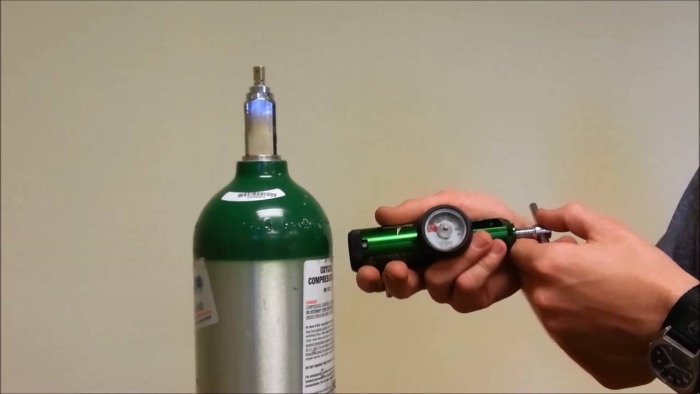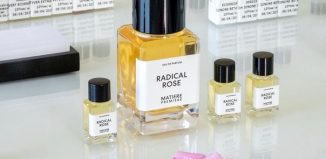Human life, just as animals and plants, requires oxygen – a gas contained in the air we all breathe. Unfortunately, some people with breathing difficulties are unable to obtain adequate oxygen on their own. This is when supplemental oxygen therapy or oxygen treatment may be required. People who receive this typically report increased energy, better sleep, as well as a higher quality of life in general.
Who Is in Need of Oxygen Therapy?
People who are unable to get enough oxygen on their own are prescribed a special O2 treatment. This is frequently due to lung disorders that prevent the lungs from absorbing oxygen, such as chronic obstructive pulmonary disease, pneumonia, and asthma, among others.

Doctors analyse the levels of O2 in a person’s arterial blood to see if they may benefit from treatment with compact medical oxygen regulator. Another method is to use a pulse oximeter, which indirectly detects oxygen levels, or saturation, without the need for a blood sample. The pulse oximeter attaches to a person’s bodily part, such as a finger where if the levels run low, this is an indication that the patient may benefit from supplemental oxygen therapy.
Normal arterial blood oxygen levels range between 75 and 100 mmHg (millimetres of mercury). A blood oxygen level of 60 mmHg or lower indicates that extra oxygen is required. Too much oxygen can also be harmful, causing damage to the cells in your lungs. Generally, your O2 level shouldn’t be higher than 110 mmHg.
Some people require oxygen therapy all of the time, while others require it only on occasion or under specific health conditions they may experience. Some patients receive this life-saving therapy at a doctor’s office, while others have regulators or a portable oxygen machine at home.
What Are Oxygen Regulators?
A cylinder oxygen regulator carries out the important function of distribution of oxygen to patients who are assessed by a physician to receive increased oxygen levels to improve or stabilize their breathing problems. It’s a pressure-reducing device that reduces the pressure of oxygen from a cylinder to a safe level for use.
Oxygen flows control regulators and conserving devices are pressure decreasing devices meant to regulate or lower oxygen pressure from a cylinder to levels that the patient can safely use. In one sentence, this specific regulator has the main purpose of regulating the flow of this life-preserving gas from an oxygen cylinder to the patient.

Different Types of Oxygen Therapy
Gas oxygen
A portable tank can be used to store oxygen gas. These are referred to as compressed gas systems. Inside your home, a bigger stationary concentrator is used, while a smaller oxygen tank can be brought outside. Smaller tanks could be utilized in conjunction with oxygen-saving technologies to extend the life of the oxygen supply. The oxygen is supplied in pulses rather than continually.
Oxygen in Liquid Form
A portable tank can also be used to store liquid oxygen. Because O2 in liquid is more concentrated, more oxygen can fit in a smaller tank. This is useful for persons who are very active, but it will evaporate if not used rapidly. These tanks can be refilled. Liquid O2 is a good option for people who need high litre flows of oxygen, usually greater than six litres per minute.
Oxygen Concentrators
Oxygen concentrators are less portable than the other alternatives. An oxygen concentrator is a device that extracts O2 from the environment, concentrates it for therapeutic use, and filters out other naturally occurring gases. Concentrators have the advantage of being less expensive and not requiring replenishing like the above-mentioned tanks.
There are portable versions available. Most models, however, are far too large to be truly portable. A tube transports oxygen from the tank to the user. It enters the lungs via nasal tubes, a face mask, or a tube put directly into the individual’s windpipe.

Hyperbaric Oxygen Treatment (HBOT)
Hyperbaric oxygen therapy is unlike the other forms of oxygen therapy. In a pressurized room or chamber, patients are enabled to breathe in pure oxygen. The air pressure in hyperbaric chambers is elevated three or four times that of normal air pressure levels.
This increases the amount of oxygen received by the tissues of the body that so desperately need it. This method of oxygen delivery is frequently used to heal wounds, severe infections, or air bubbles in your blood vessels. Hyperbaric therapy should be used with caution so that blood oxygen levels don’t grow excessively high.
Why Is Oxygen Therapy Beneficial?
Oxygen therapy, regardless of the cause, can be incredibly beneficial for persons who frequently have low oxygen levels. When used regularly, oxygen therapy can help patients be more active and mobile by reducing shortness of breath. It can also considerably improve one’s quality of life and, in many situations, increase one’s life expectancy.
Oxygen treatment can also help with symptoms like headaches, irritability, fatigue, ankle swelling, etc. Long-term oxygen therapy is required for many persons with severe COPD which is a broad term for progressive lung illnesses that cause shortness of breath.
Safety Considerations
Some people only require oxygen when performing certain activities, such as exercising or sleeping. Other folks require oxygen on a continuous basis. Most methods of oxygen therapy include portable tanks with oxygen regulator, allowing you to leave the house with them if necessary.
Don’t use drugs or alcohol while receiving oxygen therapy because they can cause breathing problems. Make your doctor aware of any other prescription medications you may be taking while discussing oxygen therapy.Although oxygen is not a flammable gas, it’s required for combustion. Fires in high-oxygen environments are more prone to spread quickly. Be cautious while using oxygen tanks near open flames or heaters, and store them safely.












